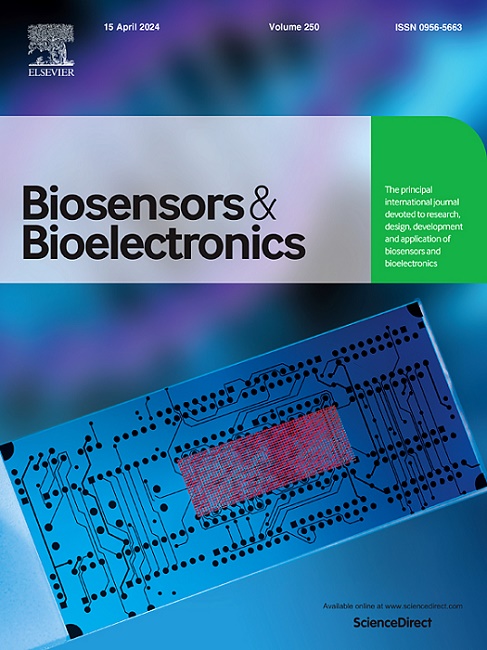Hybridization-based sensor with large dynamic range for detection of circulating tumor DNA in clinical samples
IF 10.7
1区 生物学
Q1 BIOPHYSICS
引用次数: 0
Abstract
In a liquid biopsy approach, targeted mutation analysis of circulating tumor DNA (ctDNA) is a valuable tool for diagnosis, monitoring and personalization of therapy. The ctDNA usually makes up only a small fraction of the total circulating free DNA (cfDNA), and ctDNA often only differs from cfDNA at a single nucleotide. This sets strong requirements on the analytical performance of hybridization-based biosensors, which is the focus of this paper. We use clinical samples and apply the concept of wild-type target depletion. Along with this, we develop an accurate thermodynamic theory for the competitive hybridization and use it for selecting optimal experimental conditions and for data analysis. The result is a biosensor with improved quantification of ctDNA mutations, both the sensitivity and dynamic range are improved by an order of magnitude. As reference techniques, we used a clinically-validated real-time PCR assay and digital PCR for absolute quantification. Our approach can be applied to a broad range of hybridization-based biosensors, providing a robust and effective method to improve the performance of existing biosensors.
基于大动态范围的杂交传感器,用于临床样本循环肿瘤DNA检测
在液体活检方法中,循环肿瘤DNA (ctDNA)的靶向突变分析是诊断,监测和个性化治疗的有价值的工具。ctDNA通常只占总循环游离DNA (cfDNA)的一小部分,而且ctDNA与cfDNA通常只在一个核苷酸上有所不同。这对基于杂交的生物传感器的分析性能提出了很高的要求,这也是本文研究的重点。我们使用临床样本并应用野生型靶耗竭的概念。与此同时,我们发展了一个精确的热力学理论的竞争杂交,并使用它来选择最佳的实验条件和数据分析。结果是一个生物传感器与改进的定量的ctDNA突变,无论是灵敏度和动态范围提高了一个数量级。作为参考技术,我们使用临床验证的实时PCR测定和数字PCR进行绝对定量。我们的方法可以应用于广泛的基于杂交的生物传感器,为提高现有生物传感器的性能提供了一种强大而有效的方法。
本文章由计算机程序翻译,如有差异,请以英文原文为准。
求助全文
约1分钟内获得全文
求助全文
来源期刊

Biosensors and Bioelectronics
工程技术-电化学
CiteScore
20.80
自引率
7.10%
发文量
1006
审稿时长
29 days
期刊介绍:
Biosensors & Bioelectronics, along with its open access companion journal Biosensors & Bioelectronics: X, is the leading international publication in the field of biosensors and bioelectronics. It covers research, design, development, and application of biosensors, which are analytical devices incorporating biological materials with physicochemical transducers. These devices, including sensors, DNA chips, electronic noses, and lab-on-a-chip, produce digital signals proportional to specific analytes. Examples include immunosensors and enzyme-based biosensors, applied in various fields such as medicine, environmental monitoring, and food industry. The journal also focuses on molecular and supramolecular structures for enhancing device performance.
 求助内容:
求助内容: 应助结果提醒方式:
应助结果提醒方式:


